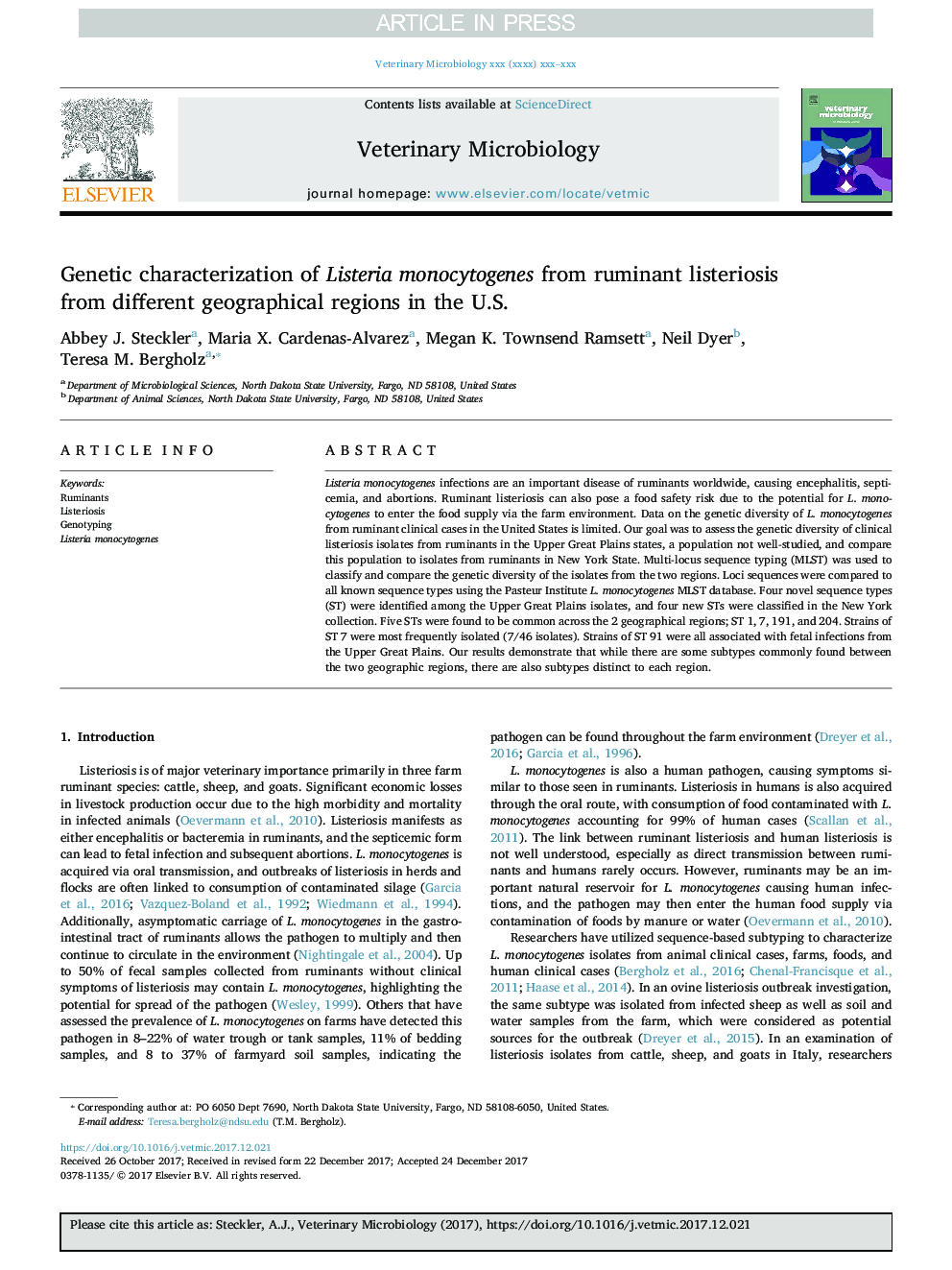| Article ID | Journal | Published Year | Pages | File Type |
|---|---|---|---|---|
| 8505597 | Veterinary Microbiology | 2018 | 5 Pages |
Abstract
Listeria monocytogenes infections are an important disease of ruminants worldwide, causing encephalitis, septicemia, and abortions. Ruminant listeriosis can also pose a food safety risk due to the potential for L. monocytogenes to enter the food supply via the farm environment. Data on the genetic diversity of L. monocytogenes from ruminant clinical cases in the United States is limited. Our goal was to assess the genetic diversity of clinical listeriosis isolates from ruminants in the Upper Great Plains states, a population not well-studied, and compare this population to isolates from ruminants in New York State. Multi-locus sequence typing (MLST) was used to classify and compare the genetic diversity of the isolates from the two regions. Loci sequences were compared to all known sequence types using the Pasteur Institute L. monocytogenes MLST database. Four novel sequence types (ST) were identified among the Upper Great Plains isolates, and four new STs were classified in the New York collection. Five STs were found to be common across the 2 geographical regions; ST 1, 7, 191, and 204. Strains of ST 7 were most frequently isolated (7/46 isolates). Strains of ST 91 were all associated with fetal infections from the Upper Great Plains. Our results demonstrate that while there are some subtypes commonly found between the two geographic regions, there are also subtypes distinct to each region.
Related Topics
Life Sciences
Agricultural and Biological Sciences
Animal Science and Zoology
Authors
Abbey J. Steckler, Maria X. Cardenas-Alvarez, Megan K. Townsend Ramsett, Neil Dyer, Teresa M. Bergholz,
